Recipe:

First, weigh the rice. You need between 100g and 150g of fine sushi rice per person. With 100g you will make 12 makis - but rather big ones!

Then, prepare the water in which you'll cook the rice. You need 90% of the weight of the rice in water. Put the water in a bowl, and add half of the kombu. It'll give a sea taste to your rice...
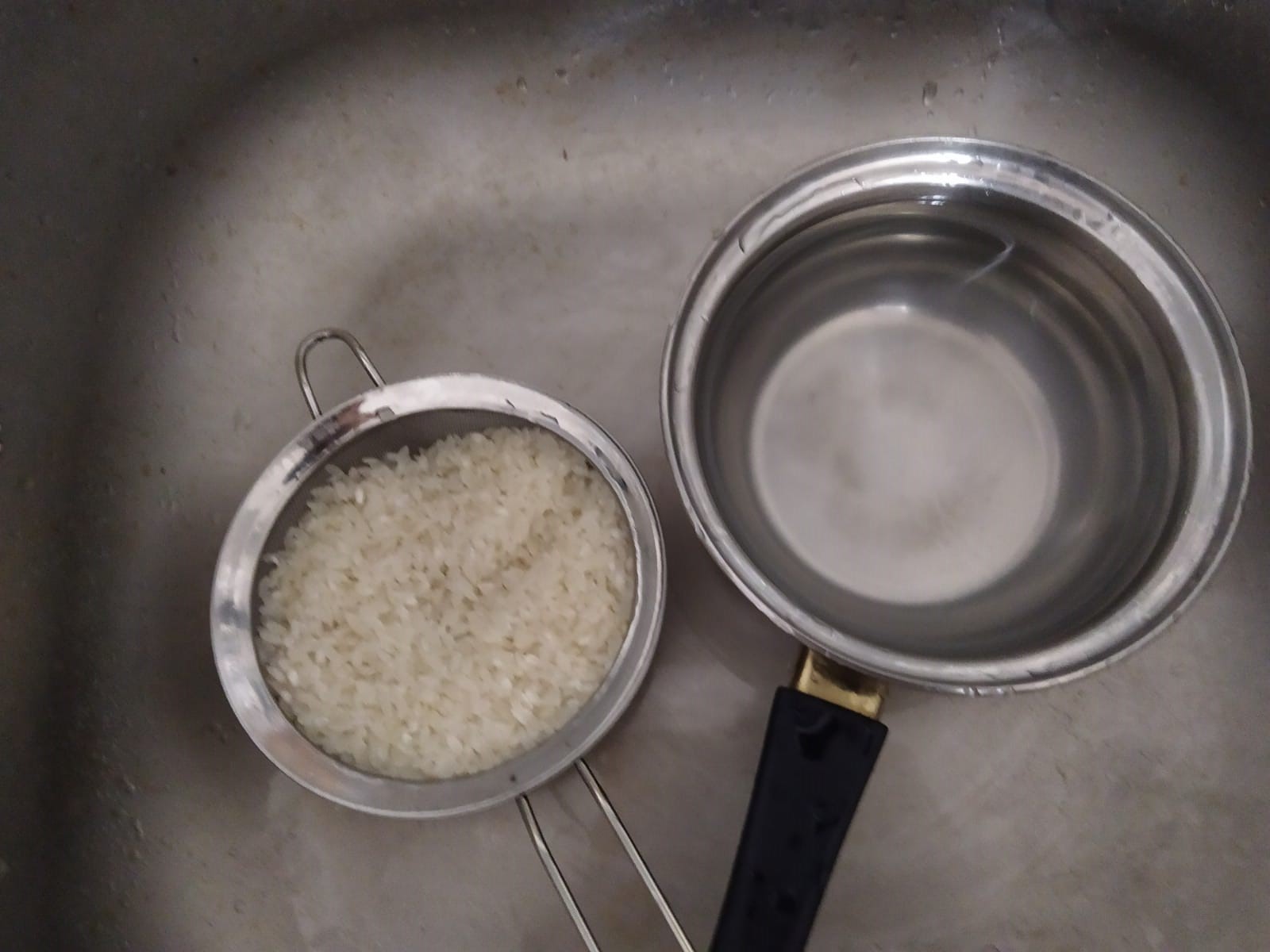
It is now time to wash the rice. During all the process, you need to be gentle and fast. Gentle so as not to break the rice grains (or you'll end up with rice mash). Fast so as not to soak the rice in water. Put your rice in a colander with thin enough holes, and prepare a bowl of about the same width.
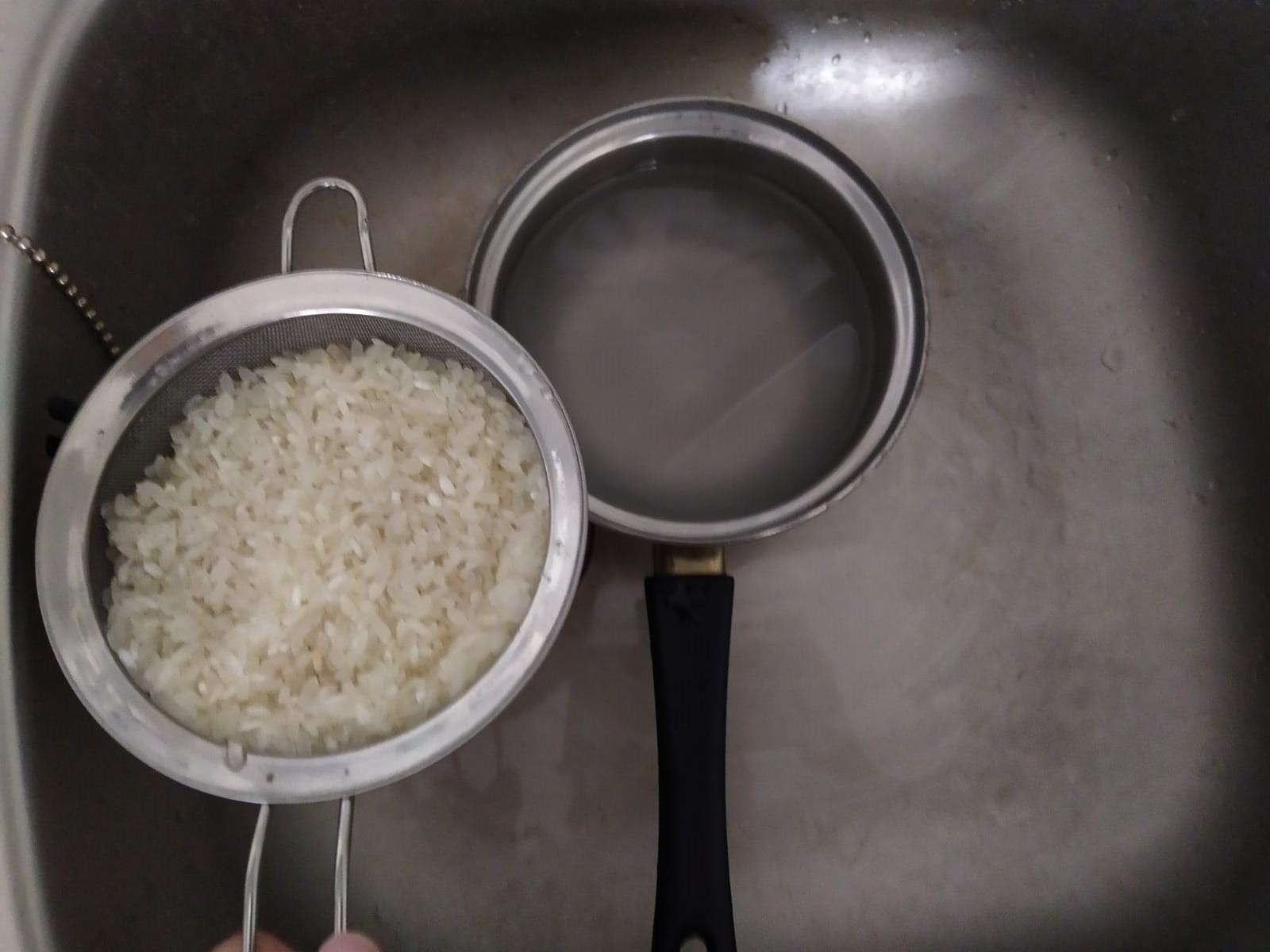
Put the colander full of rice in the bowl (since they're the same width, the colander shouldn't fall at the bottom of the bowl), and add cold water almost up to the top. Gently and fastly stir with your hands. Then remove the colander from the bowl (you can see the water has become cloudy), and throw the water in the sink. Repeat this task a total of 7 times (2 is a minimum, 7 will give the best result).
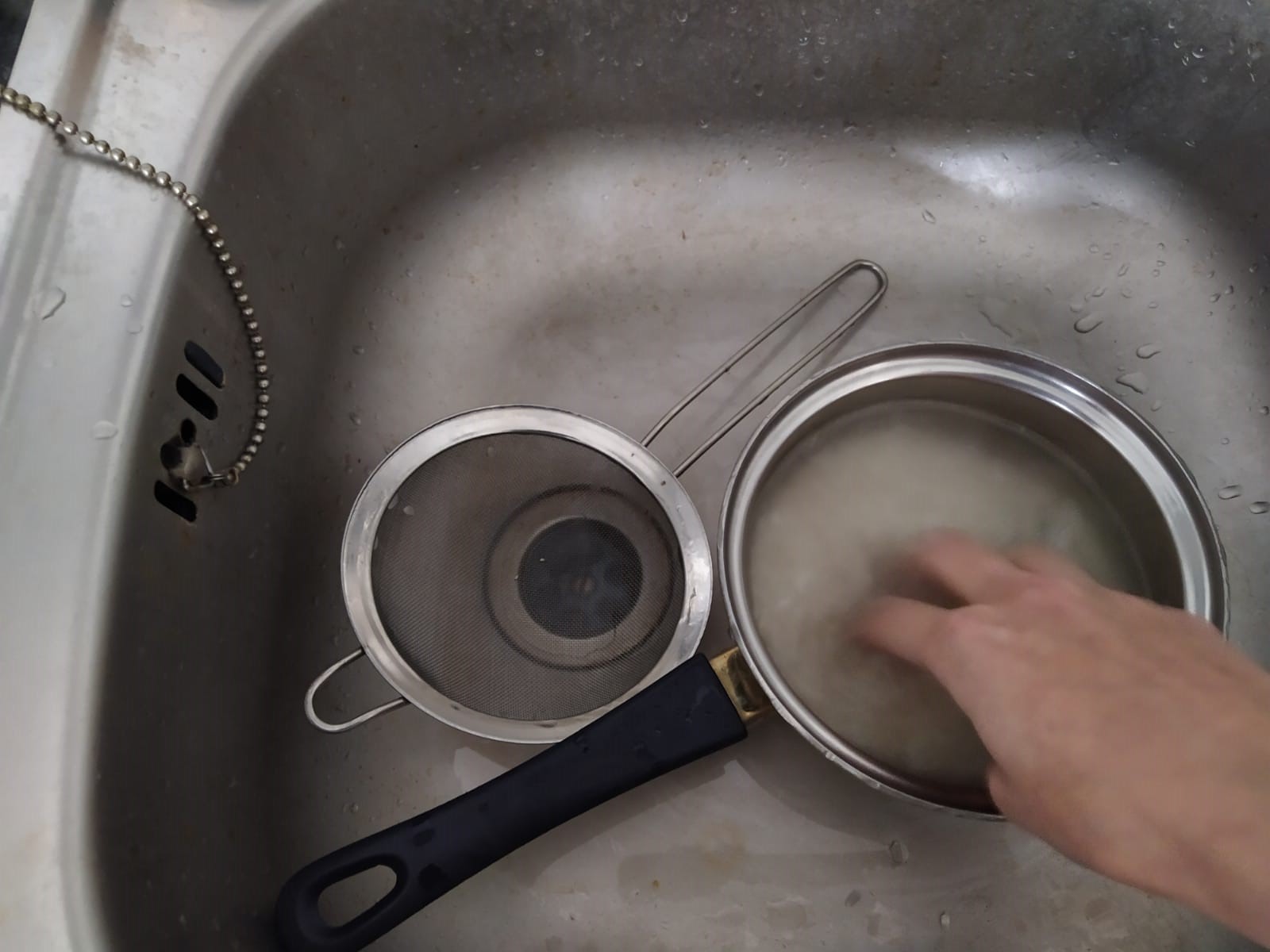
For the next steps, we want to keep washing the rice, and get rid of the broken grains as well. Here's the technique: put the rice in the bowl, add cold water while stirring (gently and fastly) with your hands, and throw the water in the sink. You must be careful not to throw all the rice with the water! If you're a bit worried, you can put the colander under the bowl so as to catch the falling rice.
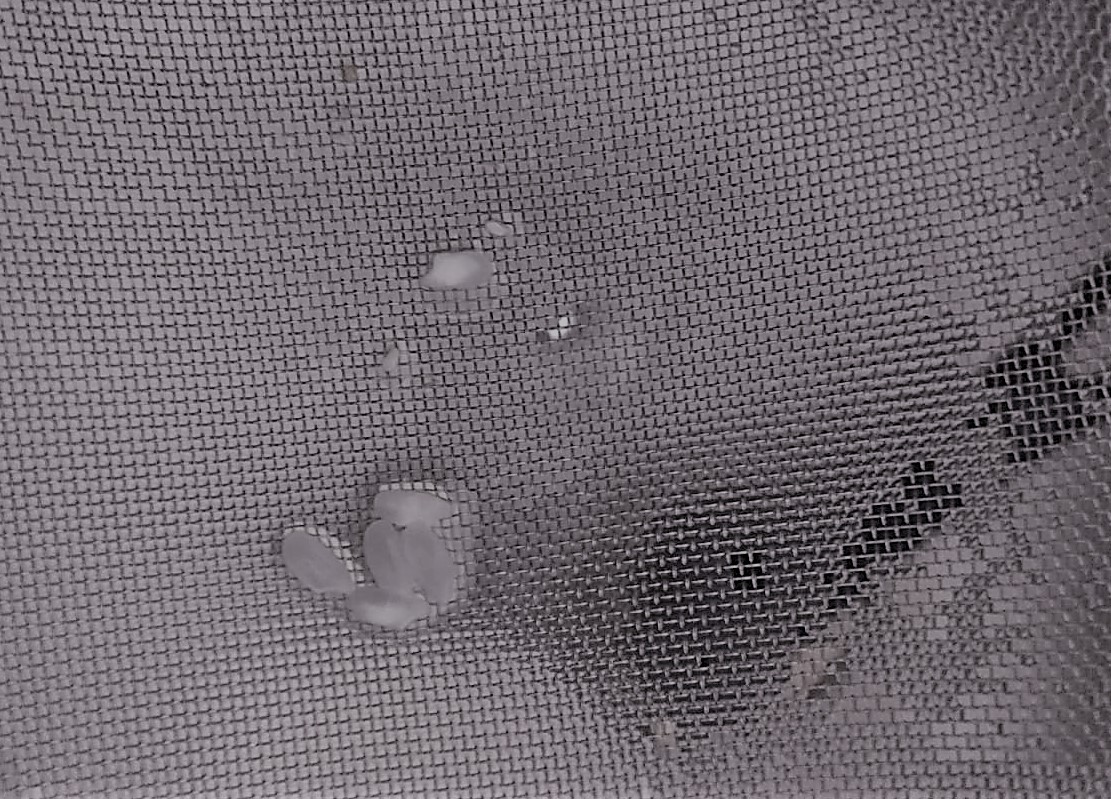
The purpose is to have only some grains falling: they're usually the broken ones, as you can see in the picture. Those grains release a lot of starch, which would make the rice sticky. Repeat this step 6 times (again, if you're in a hurry 2 times may be enough, but 6 is much better). The last times, the water you're throwing should become much clearer.
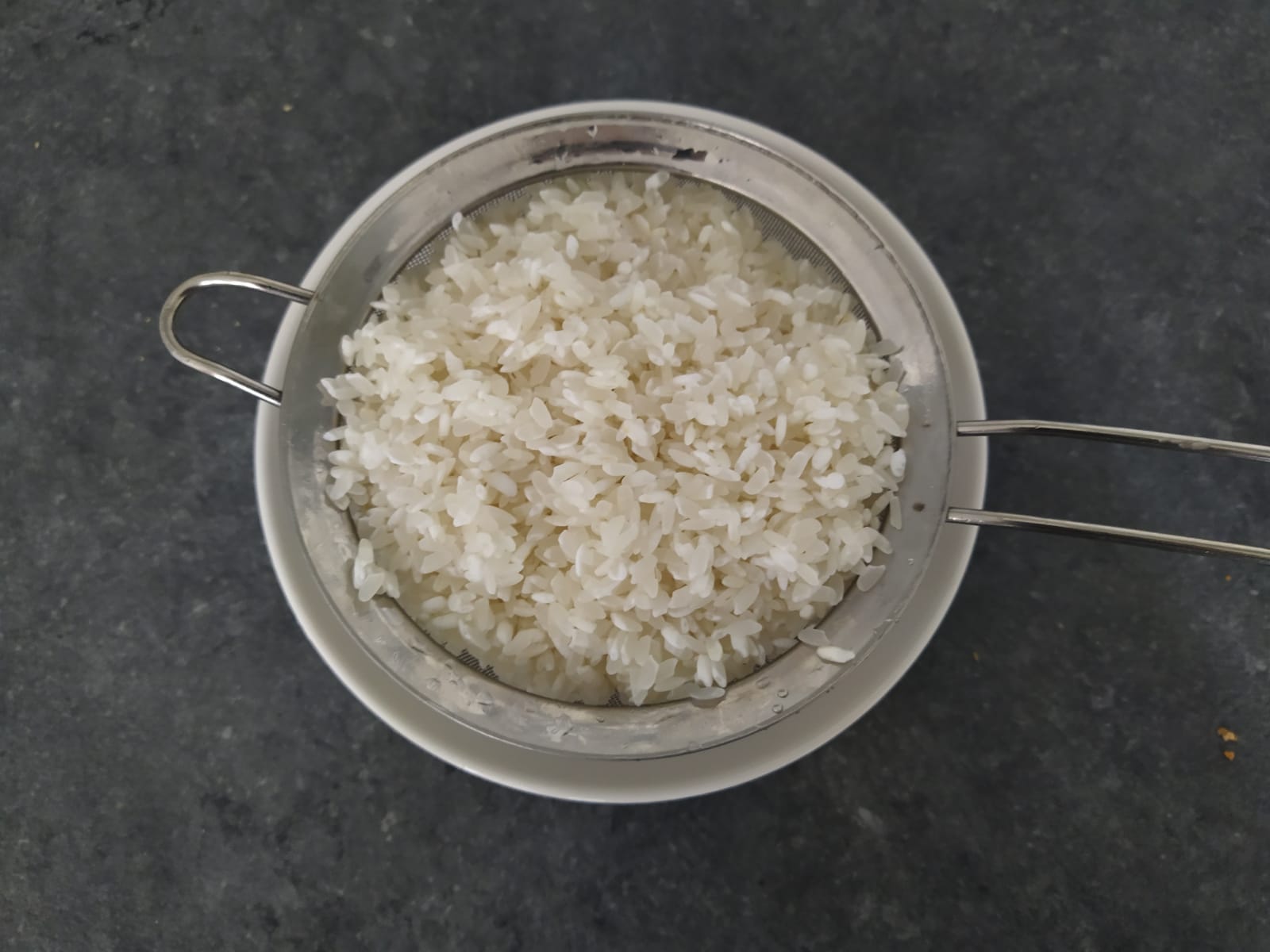
Once your rice is clean, and you've gotten rid of most broken grains, put your rice back in the colander for 10 minutes. It should become dry. If it's a bit cold or wet in your house, you may want to wait for 5 more minutes.
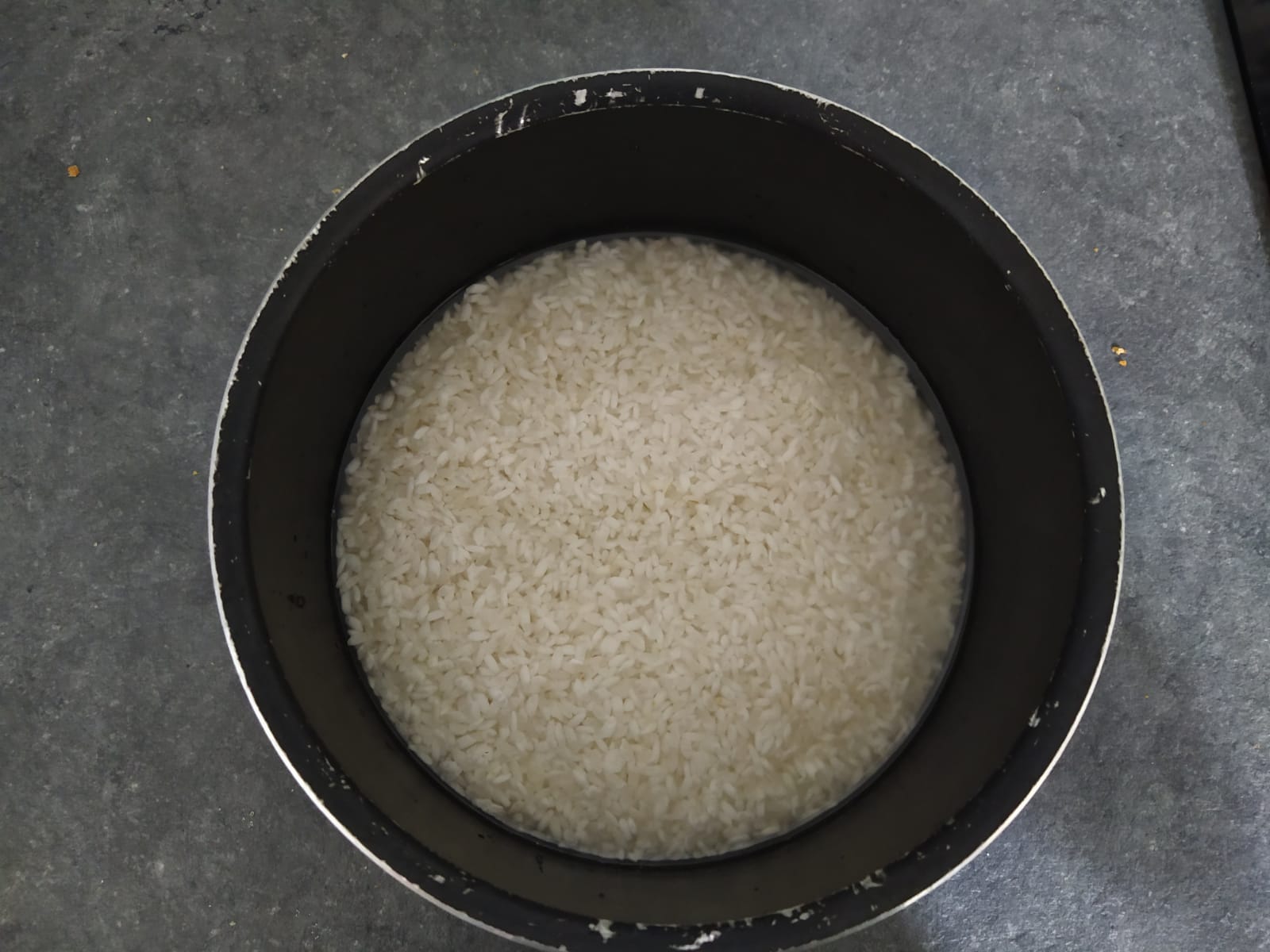
It's now the time to cook the rice! Remove the kombu from the water, and put the water with the rice in a sauce pan. Let it rest for 10 minutes. Then put a lid on, and put on the stove at mid-high heat (about 4/6) for 10 minutes. At that point, open quickly the lid, and gently mix the rice (flipping it upside down) so that it cooks evenly. Put the lid back on.
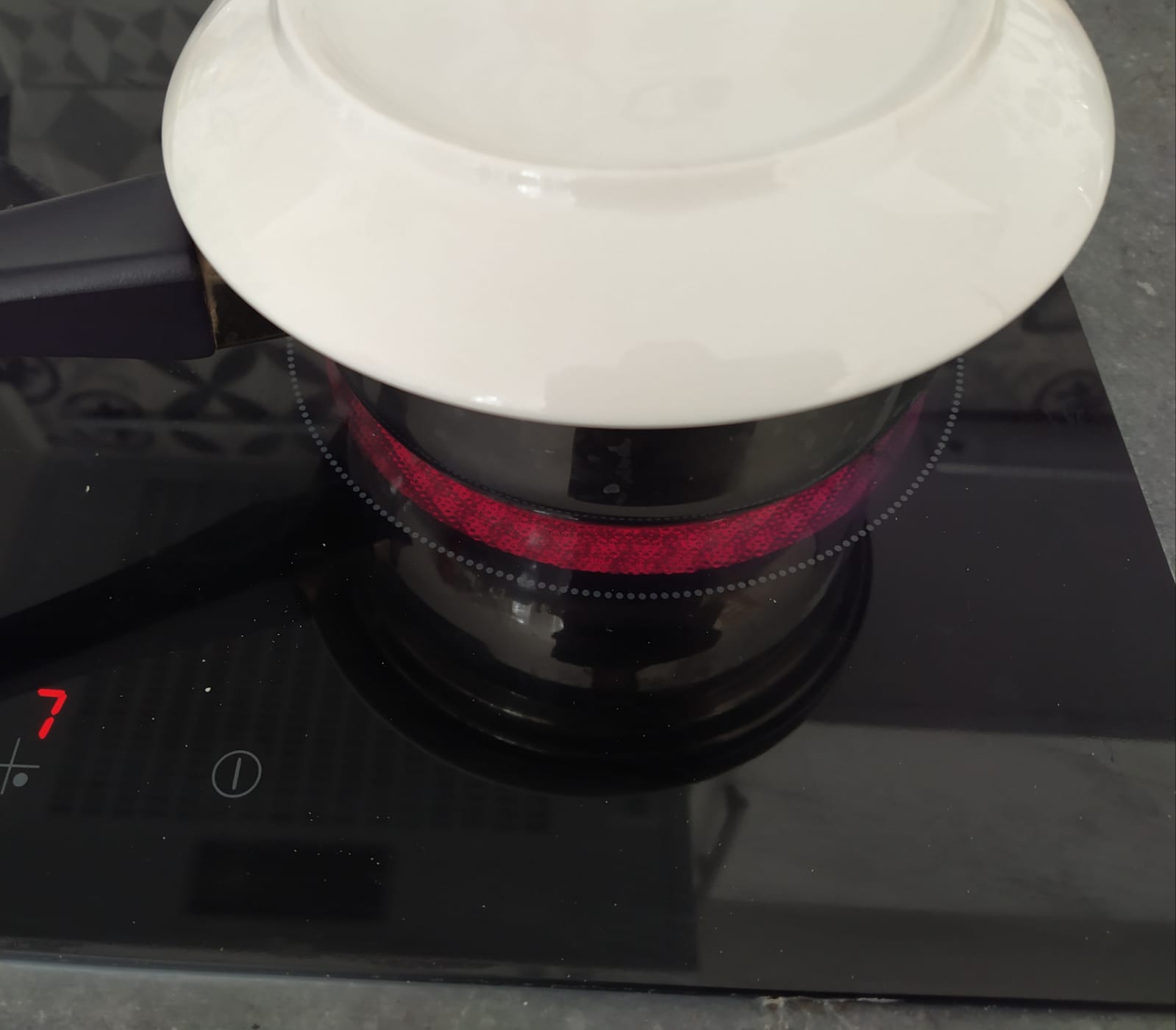
Turn the stove to low heat (1/6) for 10 minutes. Eventually, leave the pan to seat on the stove for 10 minutes, with the gaz off. To summerize: with a lid, 10 minutes rest, 10 minutes mid-high heat (mix quickly the rice at the end), 10 minutes low heat, 10 minutes on the stove switched off.
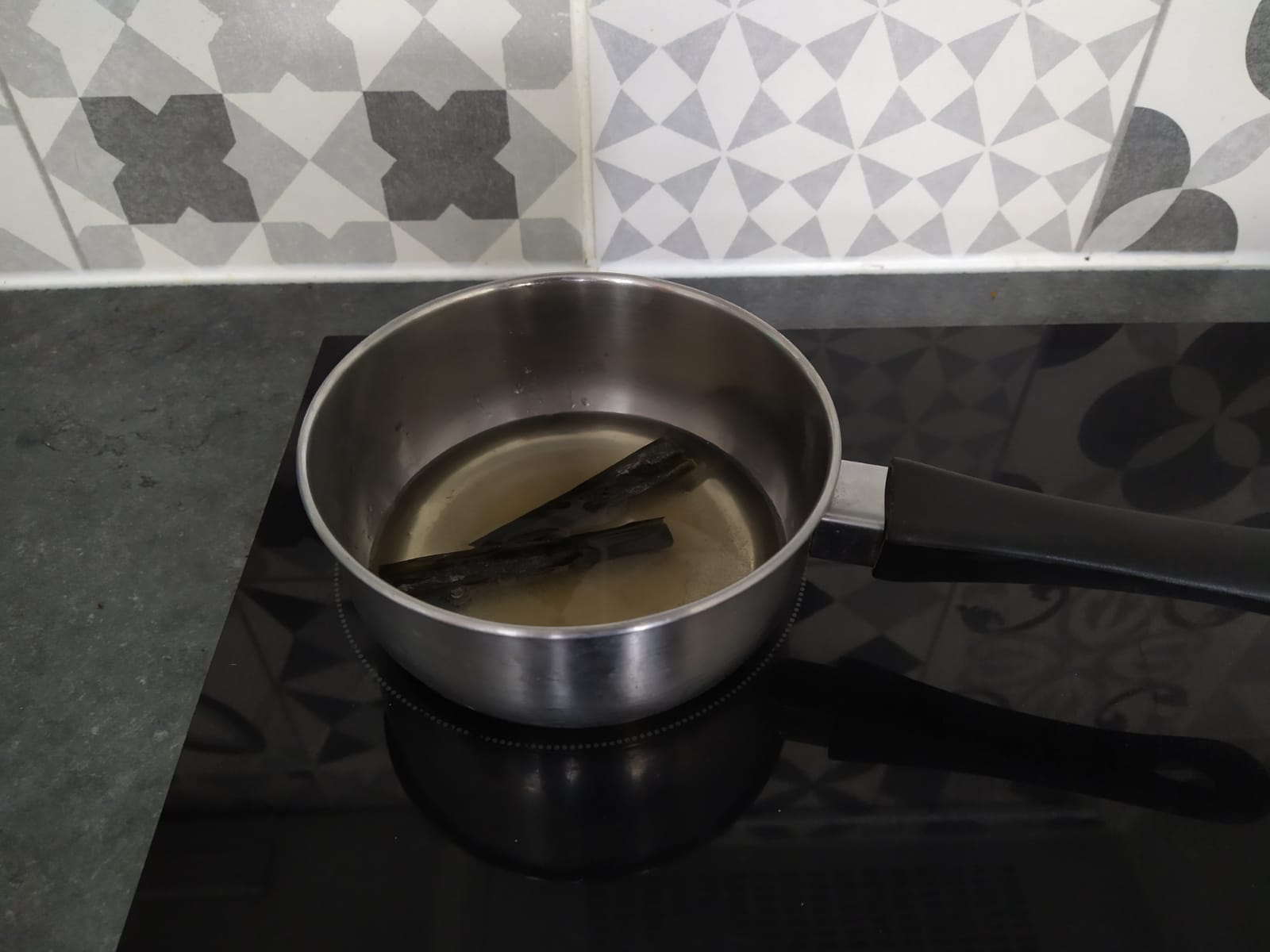
In the mean time, prepare the vinegar dressing for the rice. In a small sauce pan, add the rice vinegar, the mirin, the sugar and the salt. Add the other half of kombu. Put at medium heat for a few minutes: you just want the sugar and the salt to melt in the liquid.

You can cut the salmon. Since we're using 5 seaweed sheets, try and make 5 long and thin pieces. They should be as long as the sheets, and about 1-1.5cm thick. You can cut the avocados in slices as well, as thick as the salmon.
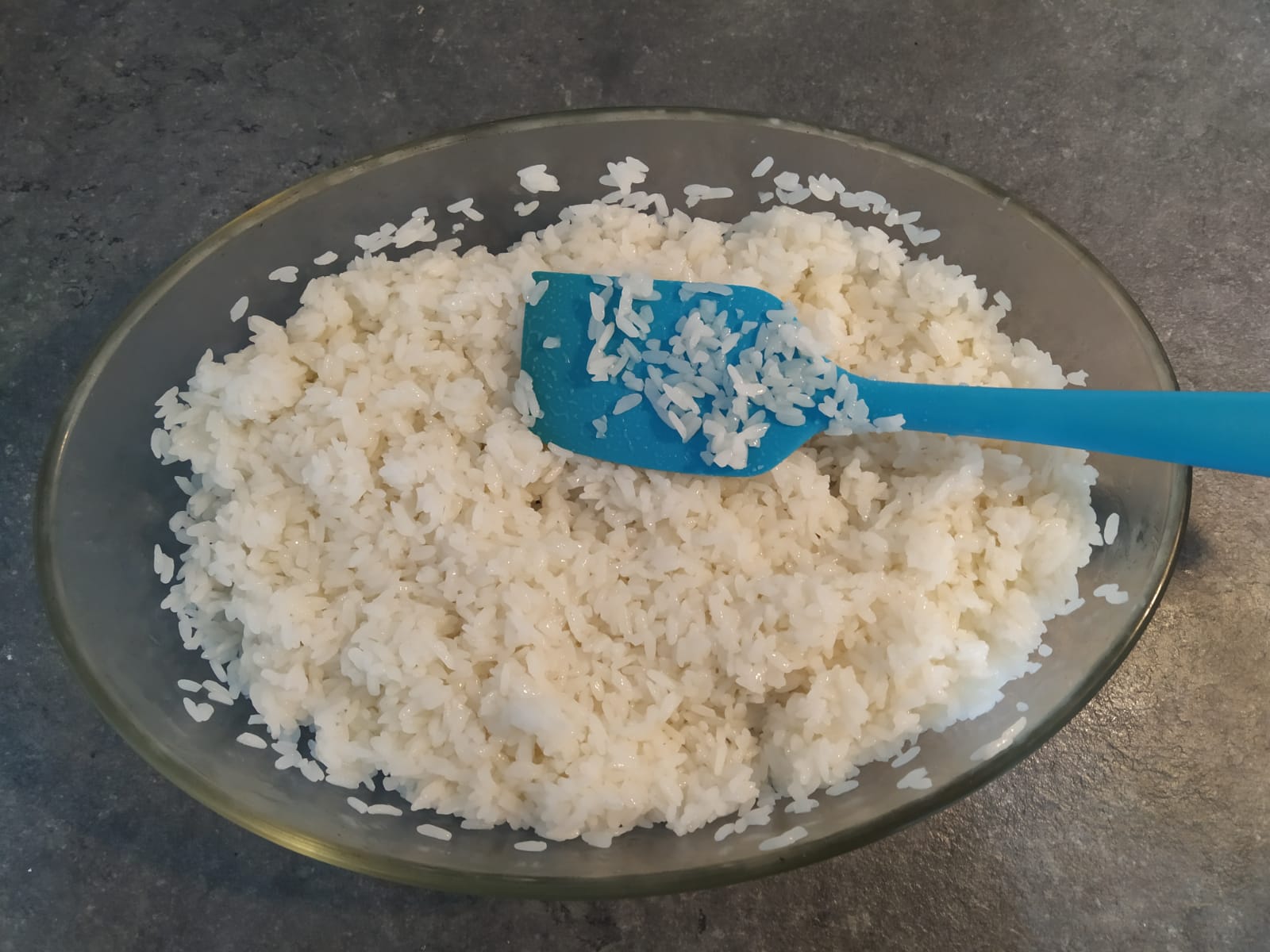
Once the cooking process of the rice is finished, put the rice in a large plate. Pour in the vinegar mixture, try and spread it evenly on all the rice. Then with a spatula mix the rice. You want to be very gentle, and move the spatula with gestures parallel to the bottom of the plate: you don't want to squish any grain.
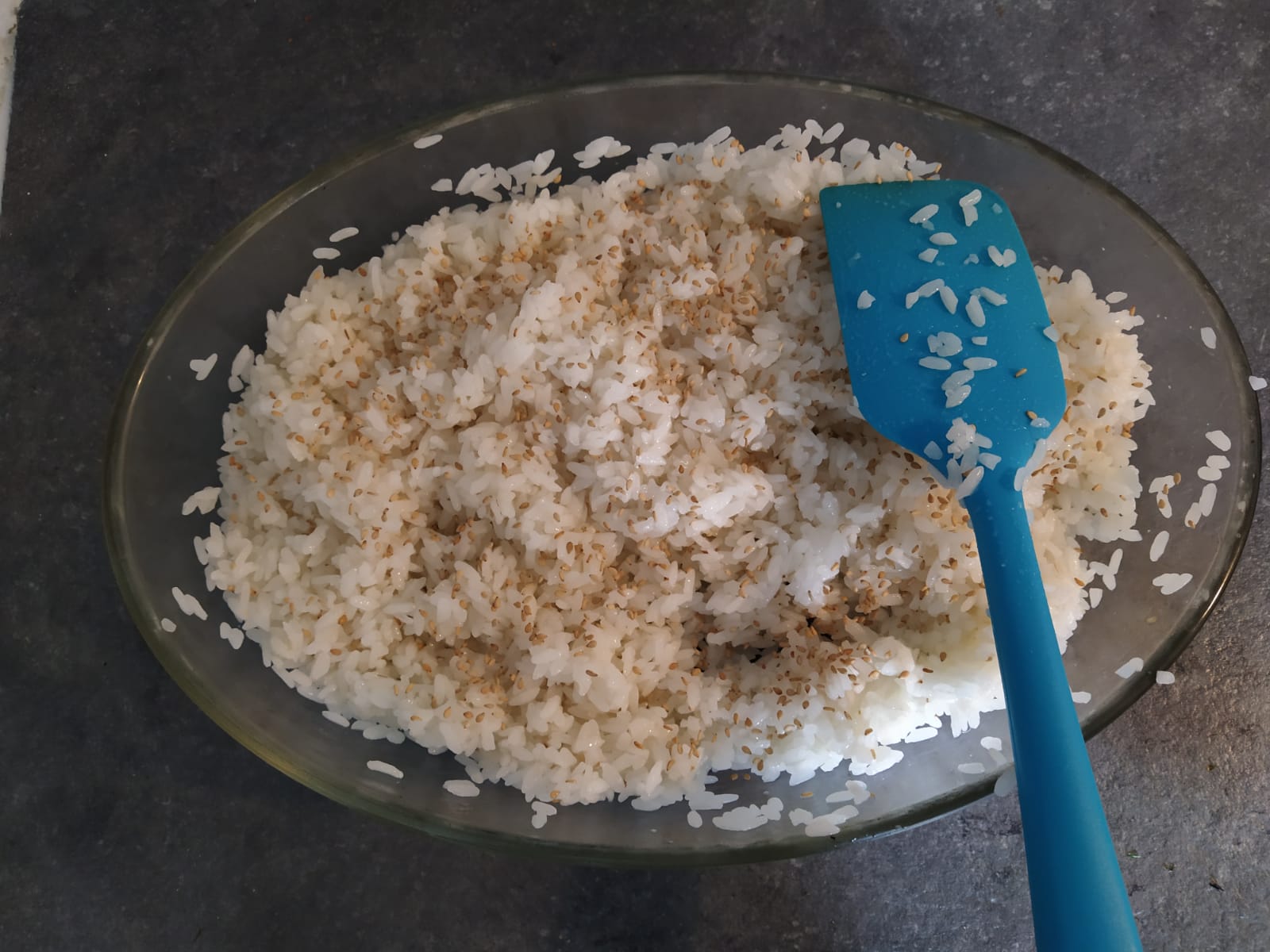
Leave it to rest for about 10 minutes. Then, sprinkle with sesame seeds, give the rice a gentle mix, and leave to rest for another 10 minutes. The rice is now ready!
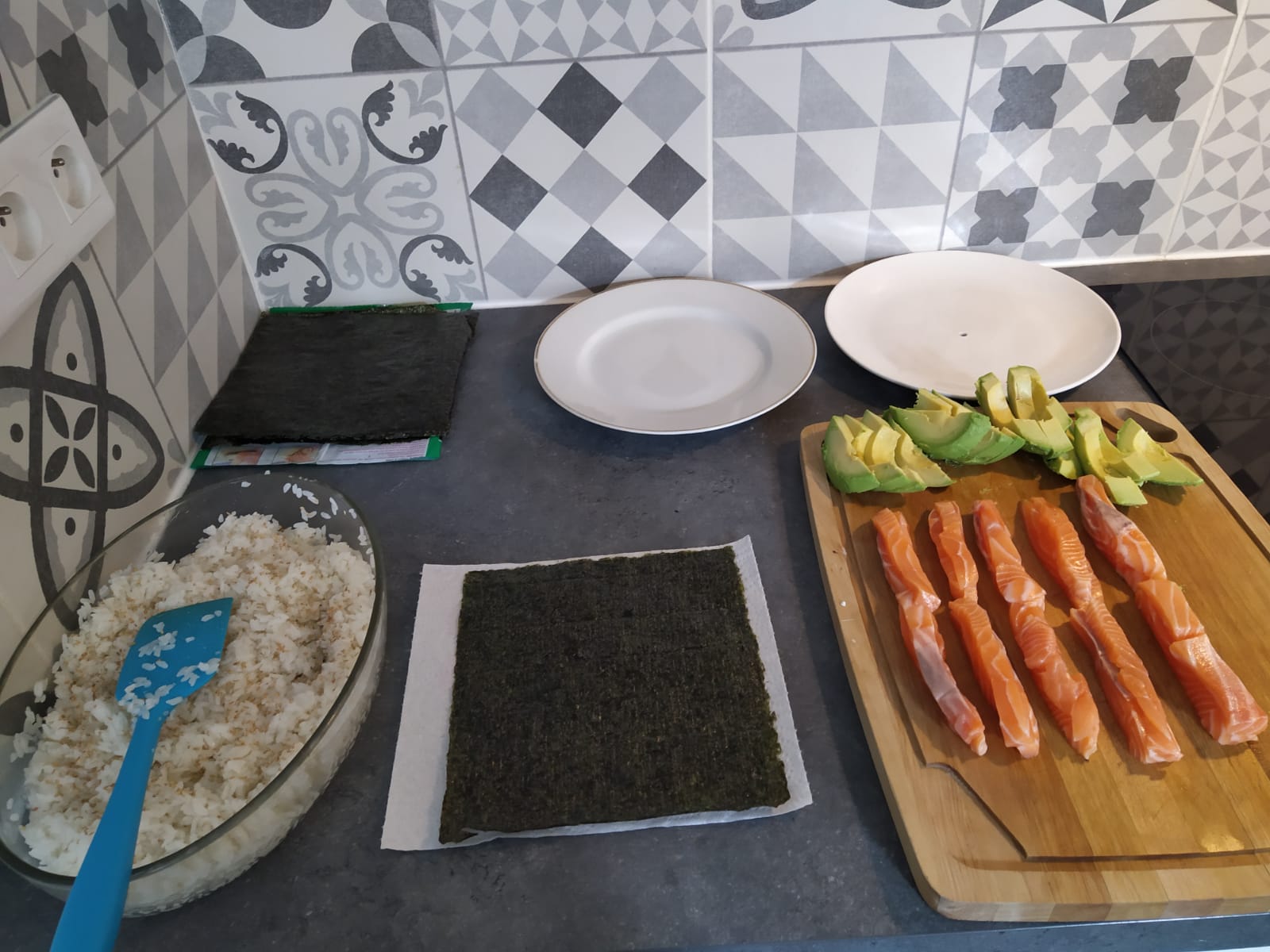
Here is how I suggest preparing your working surface: the rice on the left, the seaweed sheet just in front of you, and the salmon and avocados on the left (inverse if you're left-handed). Behind it, put the remaining seaweed sheets, and 2 or 3 plates.
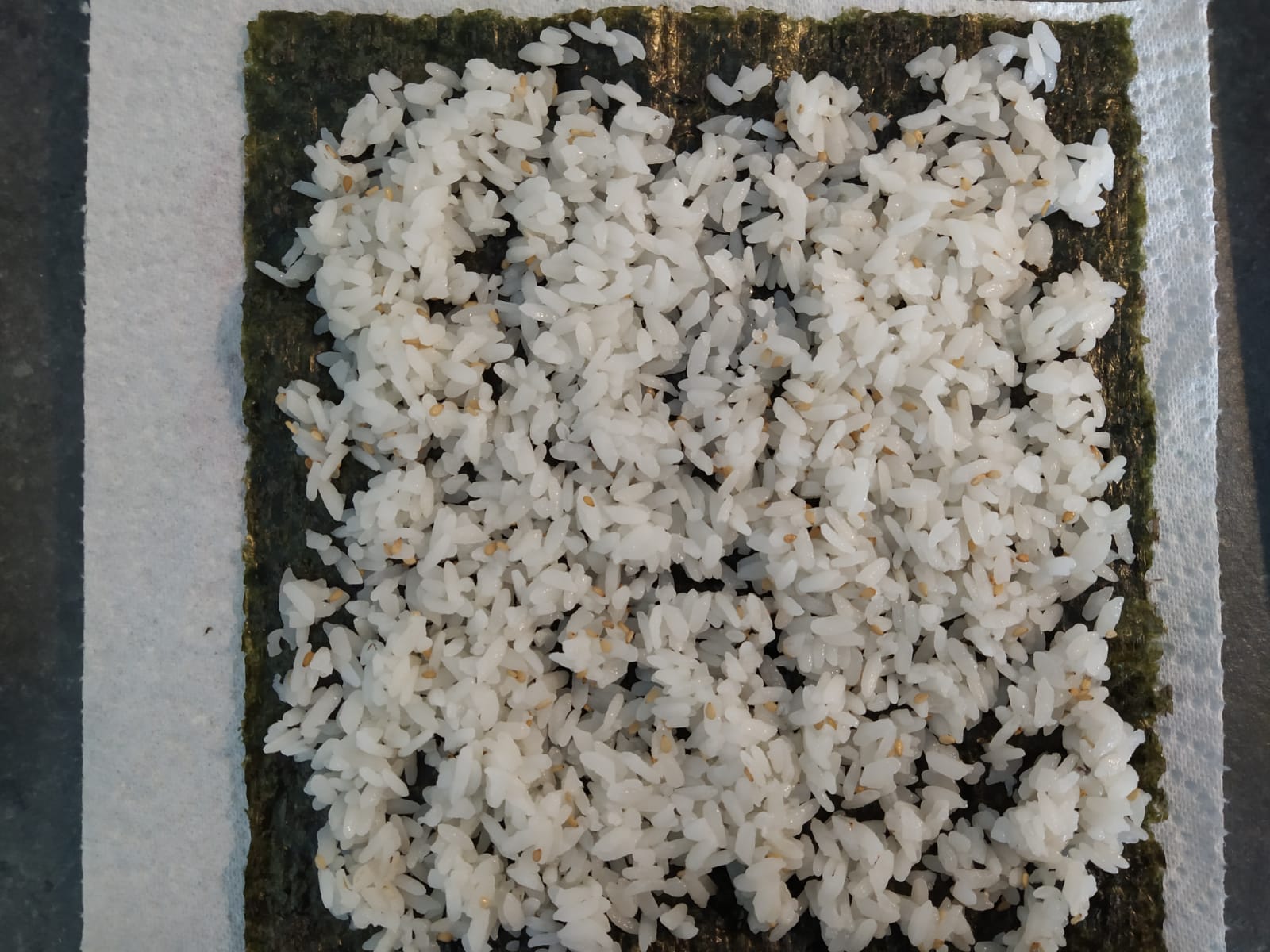
On a seaweed sheet (shiny side at the bottom), put one fifth of the rice, and spread it evenly.
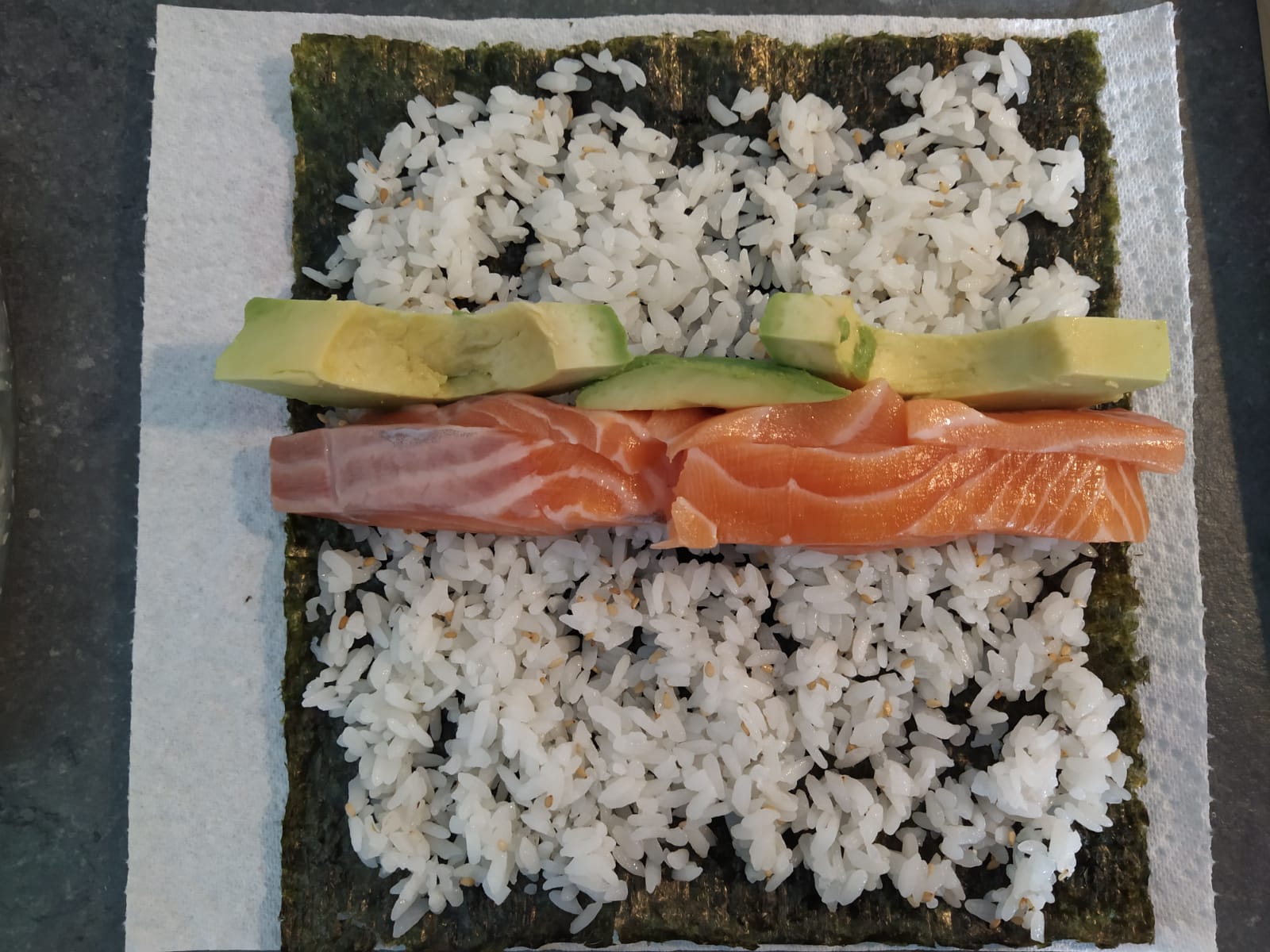
At about one third from the top, place the salmon and the avocado. Start rolling tightly from the top.
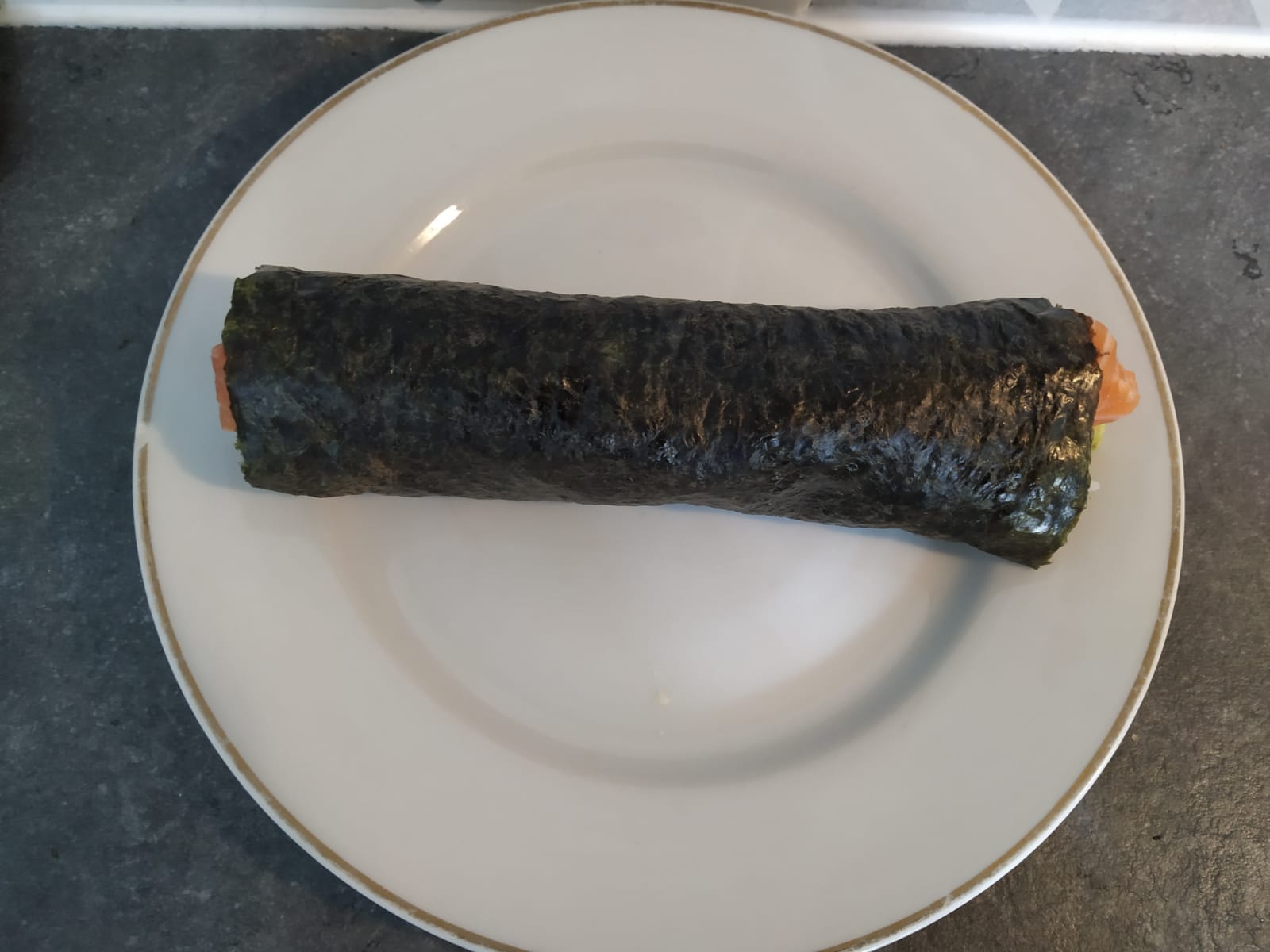
Finish rolling. The rice should make it stick. Do the same with all 5 sheets.
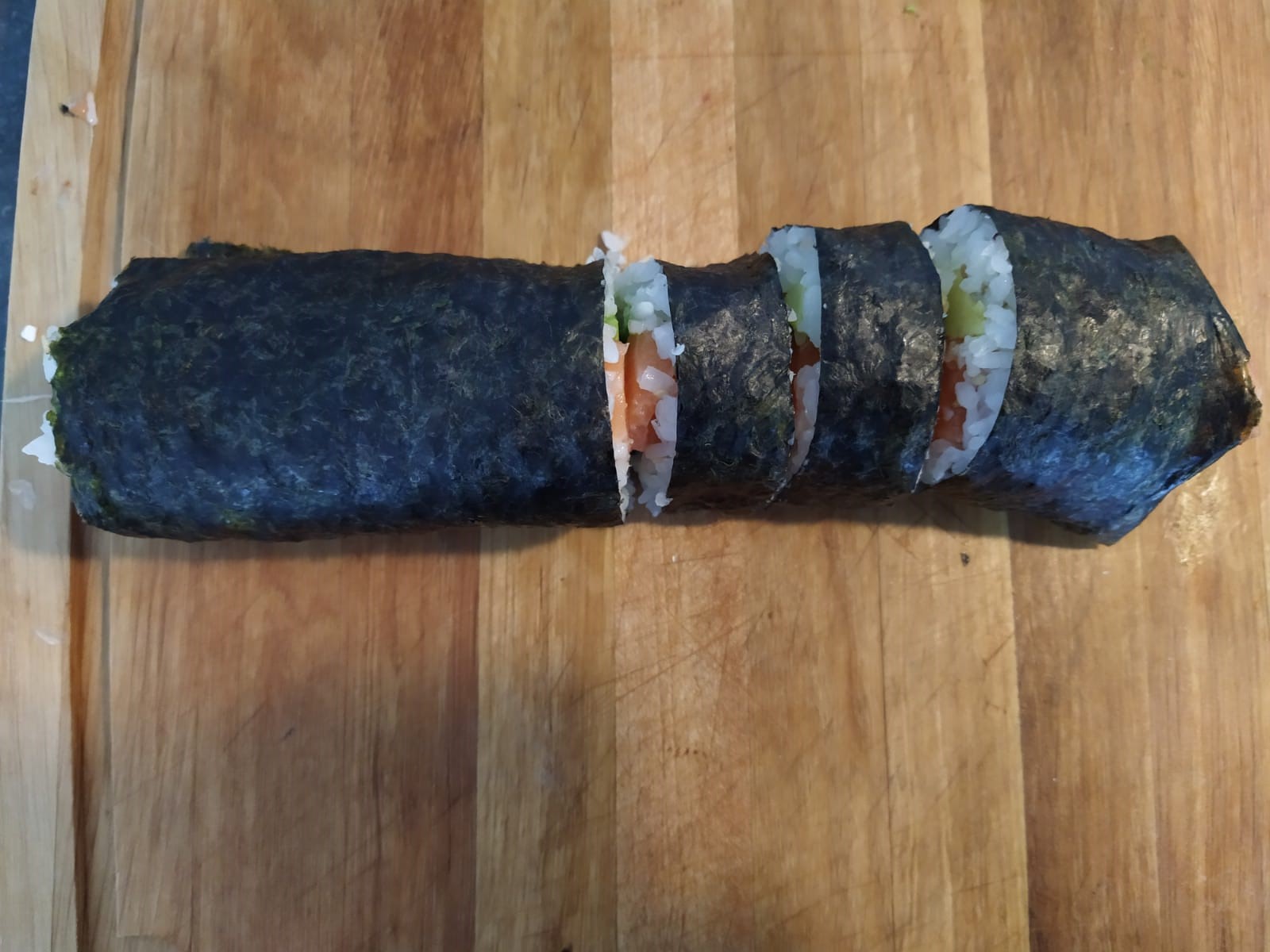
You can cut the "maki sausage" in 8 parts: first in the middle, then in the middle of the halves, and then in the middle of the quarters. This will insure equally sized makis.
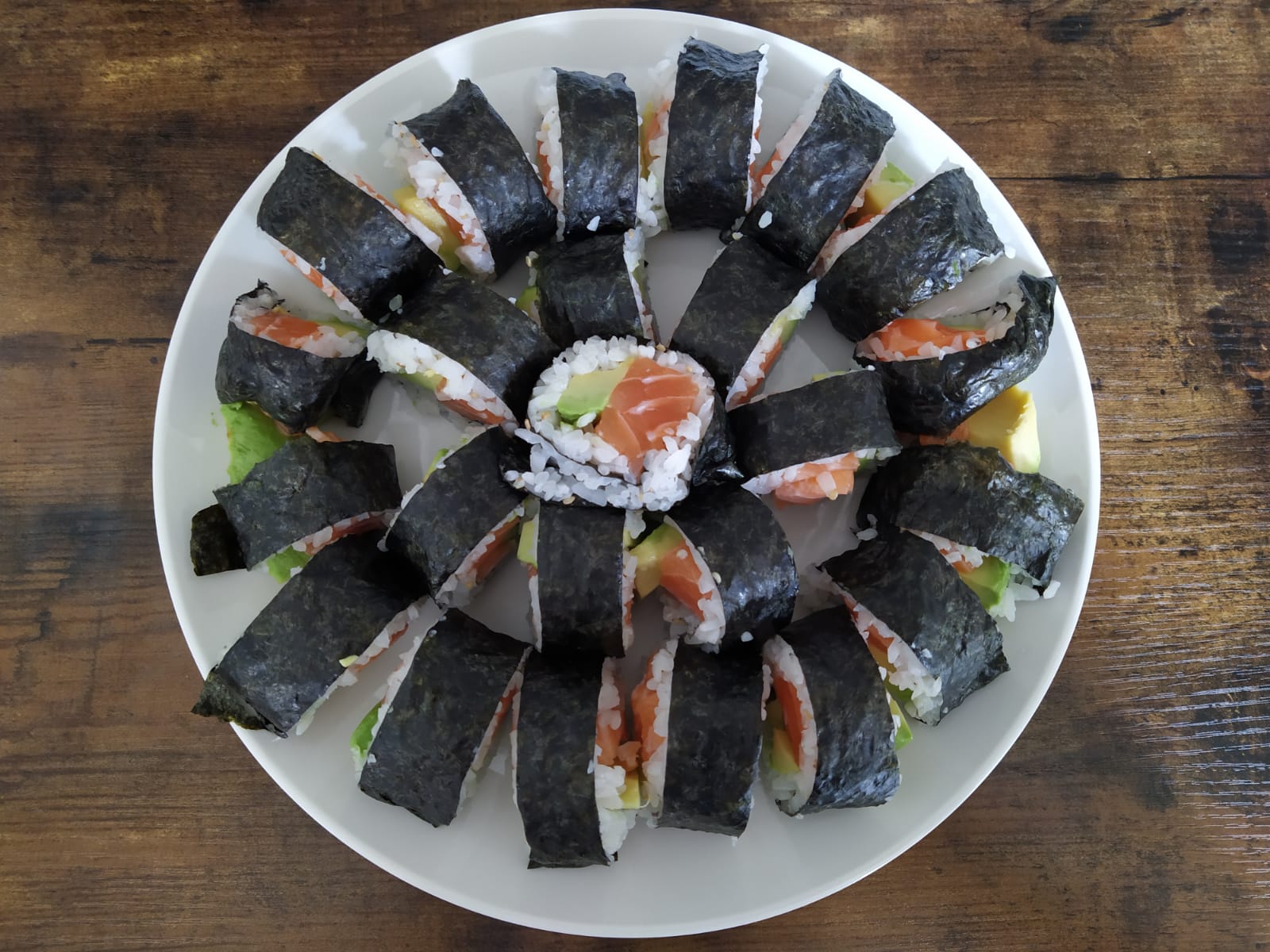
Arrange the makis nicely in the plate.
You can now enjoy your home-made makis!
Bon appétit !
Go back to the contents.
© 2020 Mathilde Merx.